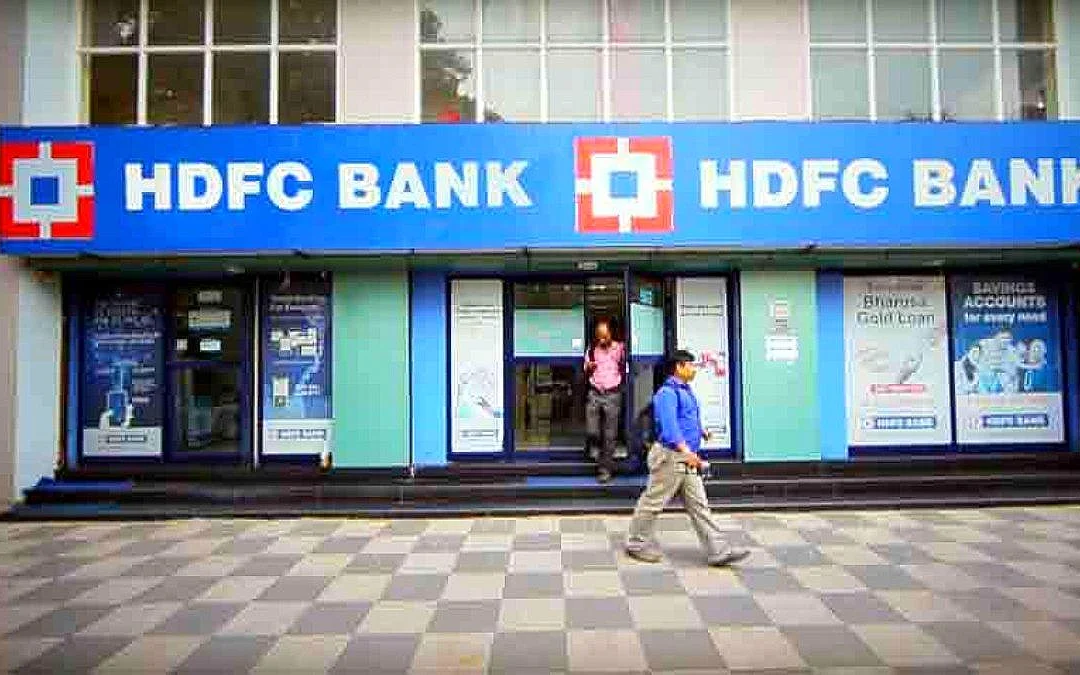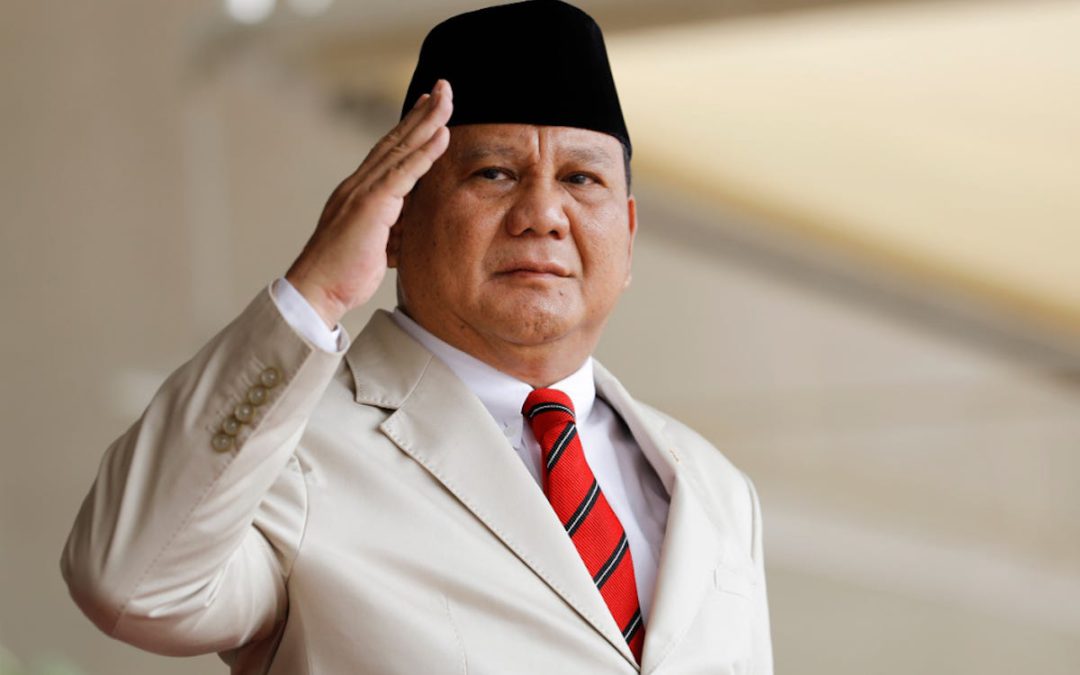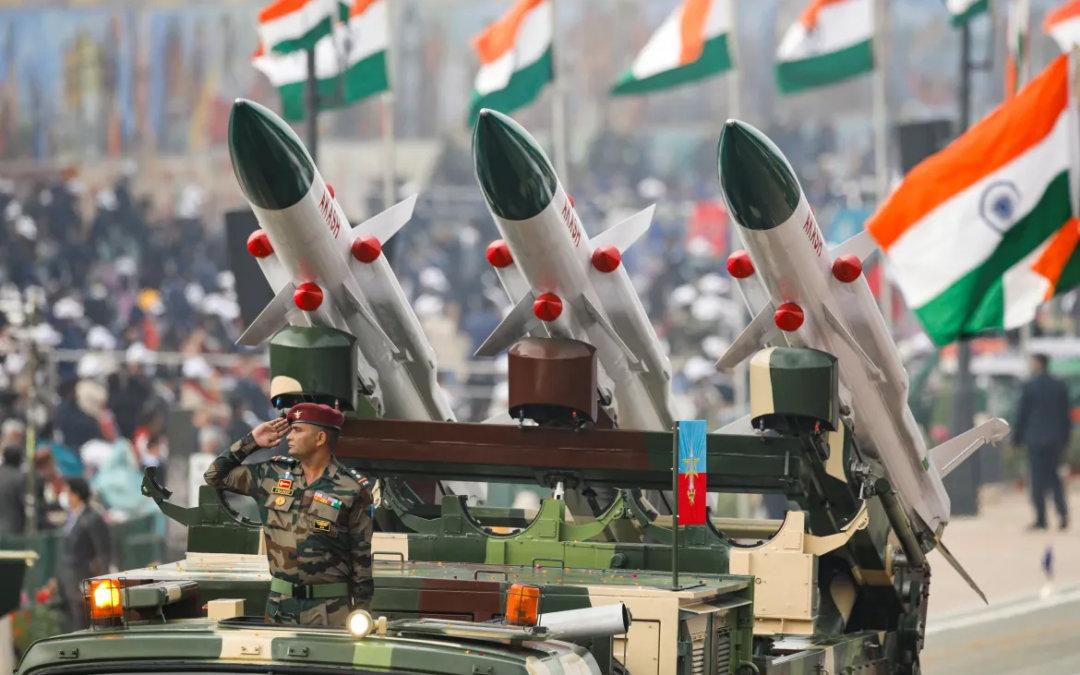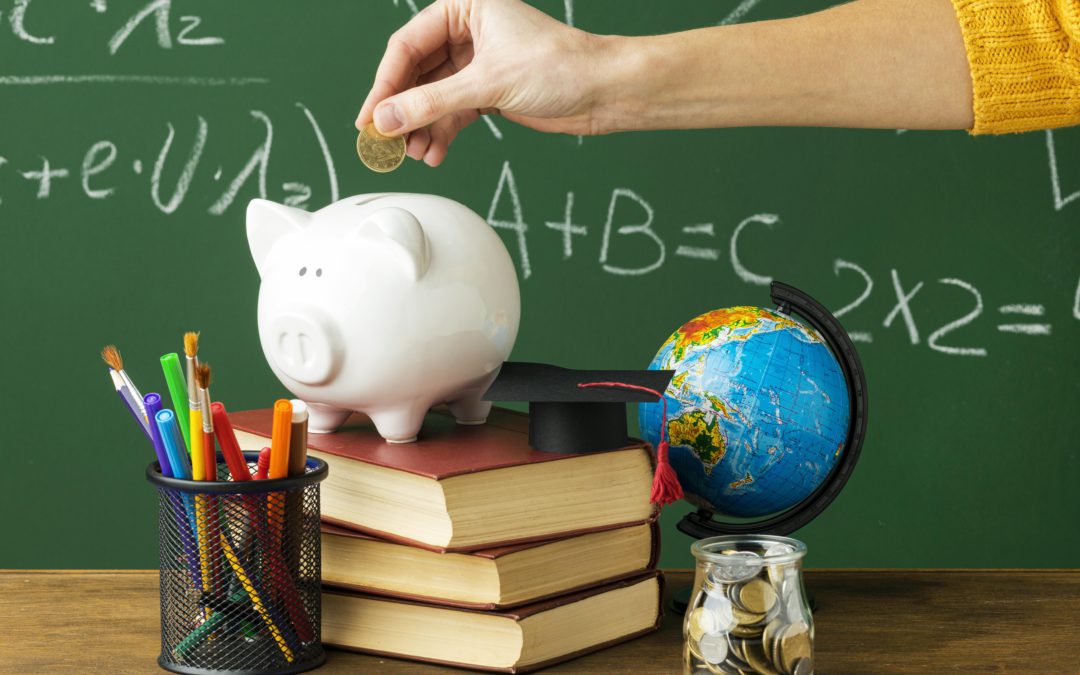
by fyAdmin | Jan 23, 2025 | Bank
HDFC Bank, India’s largest private-sector bank, reported its financial results for the third quarter of FY25 on January 22, 2025. The results showcased steady growth, meeting market expectations, despite challenges posed by slower credit expansion and a marginal decline in asset quality. Let’s dive into the highlights of the bank’s performance this quarter.
Net Profit Sees Modest Growth
The bank reported a net profit of ₹16,736 crore for the December quarter of FY25, registering a year-on-year (YoY) growth of 2.2% from ₹16,372.5 crore in the same quarter last year. This steady increase was driven by a combination of factors, including improved deposit growth and operational efficiency, despite higher provisions and slower loan growth.
Advances and Deposits: A Mixed Bag
- Advances: HDFC Bank’s gross advances increased by 3% YoY to ₹25.43 lakh crore. While retail loans grew by 10%, and commercial and rural banking loans saw an 11.6% growth, corporate and wholesale loans declined by 10.4%.
- Deposits: The bank reported a strong YoY deposit growth of 16%, with total deposits reaching ₹24.53 lakh crore. The CASA (Current Account and Savings Account) deposits, a critical measure of low-cost funds, grew 6% YoY to ₹8.18 lakh crore.
This robust deposit growth aligns with the bank’s strategy to enhance its loan-to-deposit ratio (LDR), which had surged post its merger with Housing Development Finance Corporation in 2023.
Focus on Asset Quality
HDFC Bank’s asset quality weakened marginally during the quarter. Gross Non-Performing Assets (GNPA) as a percentage of gross advances rose to 1.42% from 1.36% in the previous quarter. Net NPA also increased sequentially, from ₹10,308.5 crore in Q2FY25 to ₹11,587.5 crore in Q3FY25.
While the rise in bad loans and slippages (₹8,800 crore compared to ₹7,800 crore in the preceding quarter) may raise concerns, HDFC Bank has a history of disciplined underwriting practices that ensure long-term stability.
Net Interest Income and Margins
The bank’s Net Interest Income (NII) increased by 8% YoY to ₹30,653 crore. However, the Net Interest Margin (NIM), a key indicator of profitability, stood at 3.43%, down from 3.5% in the previous quarter. The dip in NIM reflects the higher cost of funds and a shift in the loan mix.
Operating Profit and Provisions
Pre-provision operating profit (PPOP) saw a 5.7% YoY growth, rising to ₹25,000.4 crore. On the other hand, provisions and contingencies for the quarter grew by 16.8% sequentially to ₹3,153.85 crore. While YoY provisions declined by 25%, the sequential rise reflects the bank’s cautious approach to managing potential risks.
Merger Impact and Strategic Adjustments
The merger with Housing Development Finance Corporation added a substantial loan portfolio but comparatively fewer deposits, which has prompted the bank to focus on aggressive deposit mobilization and controlled loan disbursements. This strategic realignment has impacted growth rates in some segments, such as corporate lending, but positions the bank well for sustainable growth.
Capital Adequacy and Network Expansion
HDFC Bank continues to maintain a robust capital position, with a Capital Adequacy Ratio (CAR) of 20% as of December 31, 2024, well above the regulatory requirement of 11.7%. The Tier 1 CAR stood at 18%, demonstrating the bank’s strong financial health.
Additionally, the bank’s network has expanded significantly, with 9,143 branches and 21,049 ATMs across 4,101 cities and towns as of December 2024. Its employee base also grew marginally, reaching 2,10,219.
Stock Performance and Expert Opinion
HDFC Bank shares reacted positively to the Q3 results, closing 1.42% higher at ₹1,665.05 on the BSE. Experts recommend a cautious but optimistic approach for investors. Analysts suggest fresh buying above ₹1,730 for a short-term target of ₹1,800, with a strict stop-loss at ₹1,670.
Looking Ahead
While the December quarter results highlight areas of strength such as deposit growth and operational efficiency, challenges like rising NPAs and a marginal dip in profitability metrics indicate room for improvement. The bank’s focus on disciplined growth and robust capital management ensures it remains a trusted name in India’s banking sector.
As the bank continues to integrate its merger synergies and adjust its loan-deposit strategy, the coming quarters will likely reveal the full impact of these strategic shifts. Investors and stakeholders can look forward to steady, sustainable growth as HDFC Bank solidifies its position in the evolving financial landscape.

by fyAdmin | Jan 23, 2025 | Entertainment
The 2025 Oscars nominations have officially been announced, with Emilia Pérez leading the pack with an impressive 13 nominations, making history as the most-nominated non-English-language film in the Academy Awards’ history. This achievement surpasses the previous record held by Crouching Tiger, Hidden Dragon and Roma, both of which received 10 nominations in their respective years.
Not far behind, The Brutalist and Wicked tied with 10 nominations each, followed by A Complete Unknown and Conclave, which both secured 8 nominations.
Studio Showdown: Who Leads the Race?
Among studios, Netflix takes the lead with 16 total nominations, followed by A24 with 14 nominations, Universal Pictures with 13, Focus Features with 12, and Searchlight Pictures with 10 nominations.
The announcement was made by actors Rachel Sennott and Bowen Yang, who revealed the nominees live from the Film Academy’s Samuel Goldwyn Theater. This year’s list spans 23 categories, including Best Picture, Director, and Acting Awards, as well as technical categories such as Costume Design, Cinematography, and Visual Effects.
Honoring Los Angeles Amid Crisis
Originally scheduled for January 17, the announcement faced delays due to the devastating Los Angeles wildfires, which have left over 14,000 structures destroyed and burned nearly 40,000 acres. The Academy extended the voting window twice and eventually set January 23 for the official announcement.
In response to the crisis, the Academy of Motion Picture Arts and Sciences donated $1 million to wildfire relief efforts, including canceling the traditional nominees’ luncheon and reallocating $250,000 of the luncheon budget to support those affected.
The 97th Academy Awards will take place on Sunday, March 2, 2025, at the Dolby Theatre in Ovation Hollywood, hosted by Conan O’Brien. The ceremony will begin at 4 p.m. PT / 7 p.m. ET and air live on ABC and Hulu.
Key Nominees for the 2025 Oscars
Best Picture
- Emilia Pérez
- The Brutalist
- Wicked
- Dune: Part Two
- Conclave
- A Complete Unknown
- Anora
- Nickel Boys
- The Substance
- I’m Still Here
Directing
- Jacques Audiard, Emilia Pérez
- Sean Baker, Anora
- Brady Corbet, The Brutalist
- Coralie Fargeat, The Substance
- James Mangold, A Complete Unknown
Actor in a Leading Role
- Adrien Brody, The Brutalist
- Timothée Chalamet, A Complete Unknown
- Colman Domingo, Sing Sing
- Ralph Fiennes, Conclave
- Sebastian Stan, The Apprentice
Actress in a Leading Role
- Cynthia Erivo, Wicked
- Karla Sofía Gascón, Emilia Pérez
- Mikey Madison, Anora
- Demi Moore, The Substance
- Fernanda Torres, I’m Still Here
A Historic Year for Emilia Pérez
As the frontrunner with 13 nominations, Emilia Pérez has captured global attention. The French film earned nods in major categories, including Best Picture, Director (Jacques Audiard), and Original Score (Clément Ducol and Camille). Its nominations for Costume Design, Film Editing, and Sound further solidify its sweeping success this awards season.
Musical Highlights: Original Score & Song
In the Original Score category, nominees include Daniel Blumberg (The Brutalist), Volker Bertelmann (Conclave), and John Powell and Stephen Schwartz (Wicked). For Original Song, standout contenders include “Never Too Late” from Elton John: Never Too Late and “El Mal” from Emilia Pérez.
Animated and International Features
In the Animated Feature Film category, nominees include Inside Out 2 and Memoir of a Snail, while Flow, The Girl With the Needle, and The Seed of the Sacred Fig are among the contenders for Best International Feature Film.
Spotlight on Technical Excellence
Films such as Dune: Part Two, Nosferatu, and Wicked dominate technical categories, receiving nominations for Cinematography, Visual Effects, and Sound.
Looking Ahead to the Ceremony
The 2025 Oscars not only promise to celebrate outstanding cinematic achievements but also honor the resilience of Los Angeles and its creative community amid recent challenges. With Conan O’Brien hosting the event, this year’s ceremony aims to blend glamour, artistry, and heartfelt tributes to the city’s strength.
Mark your calendars for March 2, as the world tunes in to celebrate the 97th Academy Awards and witness which films and stars take home Hollywood’s highest honors.

by fyAdmin | Jan 23, 2025 | Education
Who is Prabowo Subianto?
Prabowo Subianto is a prominent figure in Indonesia, recognized for his leadership in both the military and political spheres. As the President of Indonesia, a position he assumed in October 2024, Prabowo has quickly emerged as one of the most influential leaders in the country. His rise to power followed years of political campaigns, military service, and business achievements. Before his presidency, Prabowo Subianto was a two-time presidential candidate and held important military and political roles. His leadership now plays a pivotal role in shaping the future of Indonesia, a nation gaining increasing prominence on the global stage.
As President, Prabowo Subianto bears the significant responsibility of guiding Indonesia’s governance, economy, and security. His role involves making critical decisions on national policies, defense, and international relations. With its vast population and strategic location, Indonesia faces unique challenges, and Prabowo’s leadership is seen as vital for addressing issues such as economic growth, security concerns, and social unity.
Prabowo’s leadership focuses on nationalism and economic self-sufficiency. His vision aims to reduce Indonesia’s reliance on foreign influences by strengthening local industries, increasing agricultural output, and ensuring the nation becomes more self-reliant. His government prioritizes infrastructure modernization, improving the welfare of citizens, and safeguarding national security.
Military and Political Contributions
Prabowo’s contributions to Indonesia’s military and politics span several decades. He began his career as a high-ranking officer in the Indonesian National Armed Forces (TNI), where he earned a reputation for discipline and leadership. His military career included training abroad, notably in the United States, and he eventually became the Commander of the Army Strategic Reserve Command. This military experience has equipped him to address Indonesia’s defense needs and ensure its stability.
After retiring from the military, Prabowo transitioned into politics, founding the Great Indonesia Movement Party (Gerindra). As the party’s leader, he championed policies promoting national sovereignty, economic development, and a stronger Indonesian identity. Although he lost the presidential elections in 2014 and 2019, his perseverance and ability to connect with citizens solidified his image as a visionary leader.
Family Background and Cultural Heritage
Born on October 17, 1951, in Jakarta, Prabowo comes from a family of great significance. His father, Sumitro Djojohadikusumo, was a renowned economist who contributed to Indonesia’s post-independence development. His mother, Rachmawati Soekarnoputri, was part of the esteemed Soekarno family, which played a key role in Indonesia’s struggle for independence. His connection to Soekarno, Indonesia’s first president, has inspired his profound sense of duty to the nation.
Prabowo is of Javanese heritage, Indonesia’s largest ethnic group. Javanese culture places importance on family values, respect for elders, and adherence to tradition. These principles influence Prabowo’s leadership style, which emphasizes loyalty, discipline, and national pride. His ancestral roots and family legacy have instilled in him a deep commitment to advancing Indonesia’s progress.
Education and Training
Prabowo’s education spans both Indonesia and abroad. He attended the University of Indonesia, where he studied business and economics. Equally significant was his military training, which included studying at the prestigious George Washington University in the United States. There, he gained valuable insights into global politics and military strategy. This diverse education equipped him with the tools to navigate governance, economics, and defense effectively.
Net Worth and Business Ventures
Prabowo Subianto has built significant wealth through various business ventures. His family wealth, coupled with his investments in mining, agriculture, and real estate, has made him one of Indonesia’s wealthiest individuals. Although his exact net worth is not publicly disclosed, his financial resources have sparked public debate. Critics view his wealth as potentially influential, while supporters argue it reflects his capability to manage and grow Indonesia’s economy.
Despite his wealth, Prabowo has maintained an image of a leader prioritizing national interests over personal gain. His business acumen has helped shape policies that promote economic independence, particularly in industries like agriculture and energy. He consistently advocates for reducing Indonesia’s reliance on foreign nations and bolstering local industries.
Read more: https://theblogyfi.com/republic-day-parade-2025-a-celebration-of-indias-diversity-and-constitution/
Prabowo’s Leadership and Vision for Indonesia
Prabowo’s vision for Indonesia is centered on sovereignty and self-sufficiency. He aspires to create a nation that thrives independently, without over-reliance on foreign aid or trade agreements. Under his leadership, Indonesia has advanced its infrastructure, improved military capabilities, and expanded social welfare programs. He is also committed to youth empowerment, aiming to equip the younger generation with skills and opportunities to drive Indonesia’s growth.
Although some critics describe his leadership as authoritarian, his supporters view him as a decisive leader unafraid to make tough choices for the nation’s betterment. His emphasis on discipline, nationalism, and economic growth has made him a symbol of stability in a rapidly changing world.
Conclusion
Prabowo Subianto is a figure of immense influence, with a career that spans the military, politics, and business. His family background, education, and political journey have shaped him into a leader poised to guide Indonesia into the future. His presidency marks a turning point for Indonesia, focusing on economic growth, national security, and self-reliance. While opinions about him may vary, there is no denying that Prabowo’s impact on Indonesia’s progress will resonate for years to come.

by fyAdmin | Jan 23, 2025 | Education
The Republic Day Parade of 2025 promises to be a grand celebration of India’s cultural diversity and military strength. This year, the event holds special significance as the nation marks 75 years of the Indian Constitution while emphasizing Jan Bhagidari—the active participation of citizens in shaping the country’s future.
To commemorate these milestones, the Government of India has planned an extraordinary event. Adding an international touch, Indonesia’s President, Mr. Prabowo Subianto, will attend as the Chief Guest. For the first time, 350 Indonesian soldiers, including a 160-member marching contingent and a 190-member band, will join Indian troops in the parade at Kartavya Path on January 26, 2025, symbolizing the deep friendship between the two nations.
Showcasing India’s Rich Culture
The Republic Day Parade isn’t just a display of military might; it’s also a celebration of India’s heritage. This year, 31 tableaux from states, union territories, and central ministries will align with the theme “Swarnim Bharat: Virasat aur Vikas” (Golden India: Heritage and Development). These floats will highlight India’s progress over the past 75 years and commemorate historical milestones, including the Indian Constitution’s 75th anniversary and the 150th birth anniversaries of Sardar Vallabhbhai Patel and Bhagwan Birsa Munda.
Adding to the vibrancy, 300 artists will perform using traditional Indian instruments like the Shehnai, Dhol, Flute, and Nadaswaram. Their music will set a patriotic tone while celebrating India’s diverse musical traditions.
Honoring the Constitution
A major highlight of this year’s parade is the tribute to 75 years of the Indian Constitution. Two special tableaux will showcase its significance and remind citizens of its role in shaping modern India. As the event concludes, balloons featuring the 75th-anniversary logo will be released. To engage the public further, the Government has organized online essay and quiz competitions on MyGov, encouraging discussions about the Constitution.
Celebrating Unsung Heroes
The theme of Jan Bhagidari underscores the contributions of ordinary citizens who have achieved extraordinary feats. This Republic Day, around 10,000 special guests will be honored, including village heads (Sarpanches), disaster relief workers, water conservationists, and Paralympic athletes. These individuals embody the spirit of nation-building, showing that progress is driven by people from all walks of life.
Making the Parade Accessible to All
To ensure more people can join the celebrations, the Government has launched a new mobile app and the Rashtraparv Portal, offering details about tickets, seating, and parking. Invited guests and ticket holders will enjoy free metro rides for convenient access to Kartavya Path.
For those driving to the event, the Park and Ride Scheme allows parking at Palika Parking and Jawaharlal Nehru Stadium, with shuttle buses available to the venue. Accessibility measures like ramps and wheelchairs will ensure that everyone, including those with disabilities, can enjoy the parade.
A Cultural Extravaganza
The Ministry of Culture has prepared an 11-minute spectacle featuring over 5,000 artists performing 45 dance forms from across India. This performance will travel along Kartavya Path, ensuring every guest experiences the vibrant display. The event will conclude with a flypast by 47 aircraft, showcasing India’s military and technological prowess.
Other Highlights: Beating Retreat and School Bands
The Beating Retreat Ceremony on January 29 will mark the conclusion of the Republic Day festivities. Military bands will perform, and the National Flag will be ceremonially lowered to the National Anthem, continuing a cherished tradition.
This year’s National School Band Competition is another highlight, with 697 school bands participating. The top bands will perform during the Republic Day Parade at Kartavya Path, adding a youthful vibrance to the celebrations.
Recognizing Young Talents
As part of the festivities, 100 young students who excelled in the Veer Gatha 4.0 competition—designed to inspire interest in the bravery of the Armed Forces—will be honored and attend the parade.
Bharat Parv and PM Modi’s Citizen Engagement
The Bharat Parv, organized by the Ministry of Tourism, will run from January 26-31 at the Red Fort. It will feature Republic Day tableaux, cultural performances, and food stalls offering regional cuisines, giving attendees a chance to experience India’s diverse culture.
On January 24, Prime Minister Narendra Modi will meet special guests, including NCC cadets, volunteers, and tribal representatives, to acknowledge their contributions to the nation. On January 27, the PM will attend the NCC Rally, themed “Yuva Shakti – Viksit Bharat” (Youth Power – Developed India), at Cariappa Parade Ground.
A Celebration of Unity and Pride
The Republic Day Parade 2025 is not merely a display of military power or cultural performances. It is a tribute to India’s Constitution, its people, and their collective contributions. As the country marks 75 years of the Indian Constitution, this year’s celebrations serve as a reminder of the strength found in unity and the pivotal role every citizen plays in building Swarnim Bharat (Golden India).

by fyAdmin | Jan 22, 2025 | Education
India has long struggled with economic inequality, and most efforts to address it have focused on caste-based reservations. However, another category called the Economically Backward Class (EBC) is gaining attention for its role in promoting fairness and equality. But what exactly does EBC mean, who qualifies for it, and how does it help people? Let’s take a closer look.
What is EBC?
The Economically Backward Class (EBC) refers to individuals or families who face financial struggles but do not belong to the traditionally reserved categories like Scheduled Castes (SC), Scheduled Tribes (ST), or Other Backward Classes (OBC). Unlike caste-based reservations, EBC focuses purely on economic status.
The goal of EBC is to help people who are struggling financially by providing opportunities and support in education, healthcare, and employment. It addresses poverty directly, regardless of a person’s caste or religion.
Who Can Be Classified as Economically Backward Class (EBC)?
To qualify as EBC, an individual or family must meet certain income and asset criteria set by the government. The key requirements are:
- Income Limit: The family’s annual income must be below ₹8 lakh.
- Asset Ownership: Families should not own significant assets like large properties or extensive landholdings.
- Other Reservation Status: The applicant should not already be covered under SC, ST, or OBC reservations.
This means anyone who meets these conditions, regardless of caste or religion, can apply for EBC benefits.
Benefits of Economically Backward Class (EBC)
EBC status comes with several advantages that aim to uplift economically weaker families. Some of the main benefits include:
1. Educational Support
EBC students can get scholarships, fee waivers, and financial aid for schooling and higher education. This helps make education more accessible and affordable, encouraging students to pursue their dreams without worrying about costs.
2. Job Opportunities
Although EBC doesn’t provide direct job reservations like SC/ST/OBC categories, it opens up opportunities by supporting skill-building programs and training. This makes it easier for EBC individuals to find jobs in both government and private sectors.
3. Housing and Loans
EBC families may qualify for subsidized housing schemes or low-interest loans to start small businesses. This can help them improve their living standards and achieve financial stability.
4. Healthcare Benefits
Government healthcare programs often provide EBC families with affordable or free medical services. This ensures they have access to necessary treatments without facing financial hardships.
5. Social Welfare Schemes
Economically Backward Class (EBC) individuals can also benefit from various welfare programs, such as subsidized food, old-age pensions, and other government assistance.
How to Access Economically Backward Class (EBC) Benefits
Both the central and state governments offer EBC benefits, but the specific programs may vary from one state to another. Here are some common ways to access these benefits:
- Education: Scholarships and fee waivers can be applied for through portals like the National Scholarship Portal.
- Employment: Many government skill-development programs and job fairs give priority to EBC applicants.
- Housing and Loans: State-specific schemes provide financial assistance for home construction or small businesses.
- Healthcare: Government hospitals often have programs for low-cost or free treatments for EBC families.
Difference Between EBC and EWS
It’s easy to confuse Economically Backward Class (EBC) with Economically Weaker Sections (EWS), but there are important differences:
- Who Can Apply:
- EBC is open to anyone who meets the income criteria, regardless of caste or religion.
- EWS is specifically for individuals from the general (unreserved) category who are economically weak.
- Reservations:
- EBC benefits are mostly financial and social but do not include job or education reservations.
- EWS includes a 10% reservation in government jobs and education for the general category.
- Purpose:
- EBC is a broader term aimed at addressing economic inequality across all communities.
- EWS is focused on providing reservations to economically weaker individuals within the unreserved category.
How to Make Economically Backward Class (EBC) More Effective
To ensure EBC benefits reach the right people, a few changes could be helpful:
- Awareness Campaigns: Many people who qualify for EBC benefits are unaware of them. Government and local authorities can organize campaigns to spread awareness about these schemes.
- Skill Development: Training programs in areas like technology, trade, and services can help EBC individuals find sustainable jobs.
- Better Monitoring: Systems should be in place to track how funds and benefits are distributed, ensuring that corruption or misuse is minimized.
- Empowering Women: Special initiatives for women from EBC families—such as education scholarships, vocational training, or self-help groups—can help improve their financial independence.
Why Economically Backward Class (EBC) Matters
In a country as diverse as India, economic inequality cuts across caste, religion, and region. EBC focuses on helping people who are struggling financially, regardless of their background. This makes it an important step toward creating a fair and just society.
However, there’s still work to be done to ensure that EBC benefits are more widely available and impactful. With better implementation and awareness, the EBC category can play a key role in reducing poverty and improving lives across the country.
For more details about EBC benefits and eligibility, visit the official government website.





